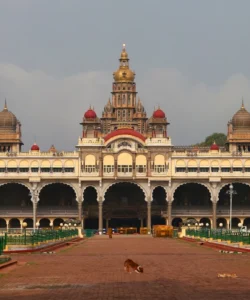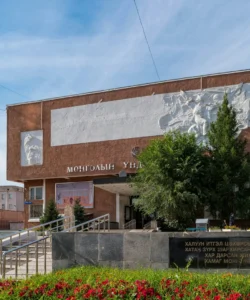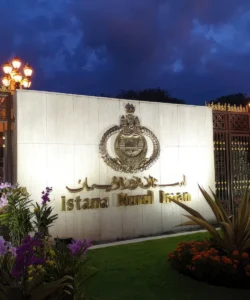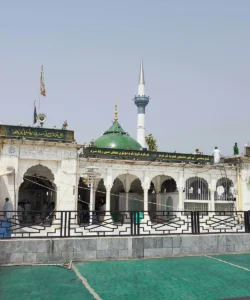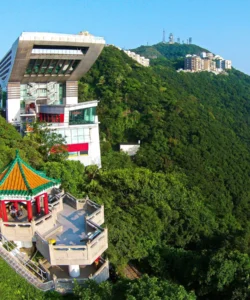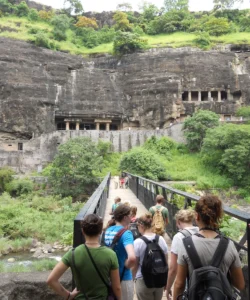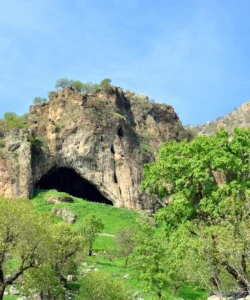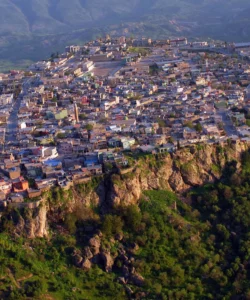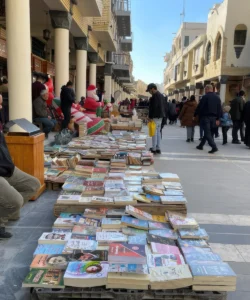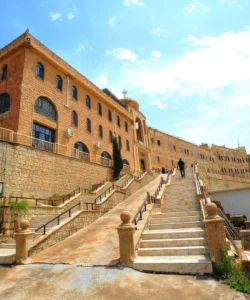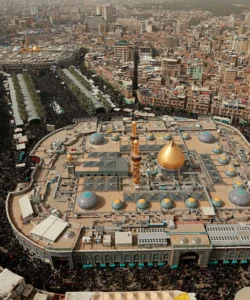Al-Mutanabbi Street is not a historical ruin or a grand architectural monument in the traditional sense, but rather a profound cultural landmark in Baghdad, Iraq. It is a bustling street filled with bookstores, cafes, and outdoor bookstalls, and it has been the heart and soul of Baghdad’s intellectual and literary community for centuries.
Name: Al-Mutanabbi Street (Arabic: شارع المتنبي, Shari’ al-Mutanabbi)
Address: The street is located in the old quarter of Baghdad, Iraq, near the Tigris River and the historic Al-Rashid Street.
How to Get There:
Travel to Baghdad is currently extremely difficult and unsafe for general tourism due to the political instability and security situation in Iraq. The following information is for historical context and is not a recommendation for travel.
- By Air: The closest airport is Baghdad International Airport (BGW). From there, a road trip to the city center would be required.
- By Road: In more stable times, Al-Mutanabbi Street was a central part of the city and easily accessible by taxi or local transport. It is a pedestrian-only street, so visitors would have to walk from nearby parking areas.
- Best Time to Visit: The street is particularly lively on Fridays, when it is at its most vibrant and crowded with booksellers and visitors.
Landscape and Architecture:
The “architecture” of Al-Mutanabbi Street is more about its atmosphere and symbolic value than a single structure.
- A Street of Books: The street itself is a narrow, car-free thoroughfare, lined with buildings that house bookstores, publishing houses, and stationery shops. On Fridays, the street overflows with outdoor bookstalls, and books are laid out on the pavement.
- The Shabandar Cafe: At the end of the street is the famous Shabandar Cafe, one of the oldest and most historic cafes in Baghdad, dating back to 1917. It has been a traditional gathering place for Iraqi politicians, intellectuals, and poets, and its walls are adorned with photos chronicling the city’s history. The cafe was tragically destroyed in a car bombing in 2007 but has since been meticulously restored.
- Statue of Al-Mutanabbi: At one end of the street, there is a bronze statue of the 10th-century classical Iraqi poet Abu al-Tayyib al-Mutanabbi, after whom the street is named. This statue, sculpted by Mohammed Ghani Hikmat, serves as a prominent landmark.
- Historic Souk: The street ends at Souk al-Sarai, one of the oldest souks in Baghdad, which adds to the area’s historic charm.
- Traditional Brick and Wrought Iron: The buildings on the street are often made of ornate brick and feature wrought-iron balconies, giving the street a historic and charming aesthetic.
What Makes It Famous:
- Center of Intellectual Life: Al-Mutanabbi Street is globally famous as the historic heart and soul of Baghdad’s intellectual and literary community. It has been a hub for writers, poets, artists, and students for centuries, a place for the exchange of ideas and intellectual discourse.
- Symbol of Resilience: The street’s fame is inextricably linked to its tragic history and remarkable resilience. In March 2007, a devastating car bombing ripped through the street, killing dozens and destroying many bookstores. However, the street was rebuilt and its intellectual spirit persevered, making it a powerful symbol of the indomitable spirit of the Iraqi people and the power of literature.
- “Baghdad Reads”: Al-Mutanabbi Street is the source of the famous Arab saying, “Cairo writes, Beirut publishes, and Baghdad reads,” a testament to the city’s long-standing reputation as a center of literacy and a consumer of knowledge.
- “Al-Mutanabbi Street Starts Here”: The bombing inspired a global artistic movement called “Al-Mutanabbi Street Starts Here,” in which artists and writers from around the world created books and art in solidarity with the street’s booksellers and intellectual community. This movement further solidified the street’s global fame as a symbol of cultural resistance.
- A “Living” Wonder: Unlike a static monument, Al-Mutanabbi Street is a vibrant, living entity. The sound of discussions in cafes, the smell of old books, and the constant flow of people make it a truly immersive cultural experience.
Differences from Some Other Wonders:
- A Cultural, Not Architectural, Wonder: The street’s fame is not based on a grand architectural structure like the Great Ziggurat of Ur or the Imam Hussein Shrine, but on its cultural and intellectual significance. It is a testament to the power of a place as a hub of ideas.
- Focus on Modern History: While many Iraqi wonders are ancient, Al-Mutanabbi Street’s fame is defined by its modern history of conflict and resurrection, particularly the 2007 bombing. This tragic but inspiring narrative is central to its identity.
- No Single Monument: The “wonder” is the street itself, as a whole, rather than a single building. It is a collective space of books, people, and ideas, with landmarks like the Shabandar Cafe and the statue of Al-Mutanabbi serving as anchors for this larger cultural entity.
- A Symbol of the Written Word: Its identity as a street dedicated to books and intellectual freedom is unique. This is a place where the written word is revered, and its preservation is a matter of profound national and cultural importance.
Al-Mutanabbi Street Photos:



































